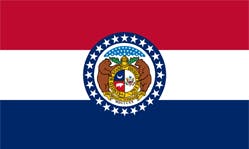Medicare beneficiaries who live in Missouri enjoy prescription drug coverage with a Medicare Part D plan. Although the Medicare program is more than half-a-century old, it did not include prescription drug coverage until 2006, courtesy of the Medicare Modernization Act of 2003.
What is Medicare Part D in Missouri?
Medicare Part D prescription drug coverage in Missouri works the same as it does across the rest of the country. Private insurance companies contract with Medicare to provide Part D and Medicare Advantage (MA) plans. Benefits and costs vary depending on which plan you choose.
Original Medicare includes Part A, hospital insurance, and Part B, medical insurance. While it offers excellent coverage, benefits do not include prescription medications. That's where Part D comes in.
To get Medicare Part D in Missouri, you have two options: A standalone Medicare Part D prescription drug plan (PDP) or a Medicare Advantage Prescription Drug plan (MA-PD).
You can add a standalone Part D plan to either Original Medicare or an Advantage plan that does not include prescription drug coverage. You cannot add it to an MA-PD plan, though. If you are enrolled in a Medicare Advantage Prescription Drug plan and then sign up for a standalone Part D plan, you will be automatically disenrolled from your MA-PD plan and placed back in Original Medicare.
Please note that not all Medicare Advantage plans offer the same benefits. Review your Medicare plan options in Missouri carefully before signing up for one.
How do you qualify for Medicare Part D in Missouri?
If you're eligible for Medicare and enrolled in Part A and/or Part B, you qualify for Medicare Part D in Missouri. To enroll in a specific plan, though, you must also meet that plan's requirements. This typically means that you need to live within the Part D plan's service area.
Medicare Part D enrollment periods in Missouri
Starting with your Initial Enrollment Period (IEP), the Medicare program limits Part D enrollment to specific periods.
If you age-in to Medicare, your Initial Enrollment Period begins 3 months before your 65th birthday and ends 3 months after your birth month. This gives you a full 7 months to sign up for Medicare and find the right Part D plan for you.
Please note that the only people who are automatically enrolled in Medicare when they turn 65 are those who began collecting Social Security benefits at least 4 months before their birthday. Even if you are automatically enrolled in Parts A and B, Medicare Part D enrollment is never automatic.
You are also automatically enrolled in Medicare Parts A and B if you collect Social Security disability benefits for 24 months. Eligibility begins on month 25, with your IEP opening at the beginning of month 22 and ending after month 28. You may sign up for a Part D plan during your IEP.
You may also be able register for Medicare Part D during one of the following periods:
- General Enrollment (January 1 through March 31) is available to everyone who is eligible for Medicare but not yet enrolled. During this time, you may enroll in Part A and/or B. Beginning April 1, you then have 3 months to sign up for Medicare Part D or an Advantage plan (with or without prescription drug coverage).
- The Medicare Annual Enrollment Period (AEP) lasts from October 15 through December 7. Current Medicare beneficiaries may make a variety of changes to their coverage during AEP, including signing up for a new Part D or MA-PD plan.
- The Medicare Advantage Open Enrollment Period (January 1 through March 31) allows beneficiaries who are currently enrolled in an MA plan to either change to a new Advantage plan or return to Original Medicare. You may only sign up for a Part D plan if you lost your prescription drug coverage after making one of those changes.
Finally, there are Special Enrollment Periods (SEPs) available to Medicare beneficiaries who experience certain life changes, such moving or losing their current coverage. There are dozens of qualifying special circumstances. Click here to see if you qualify for an SEP.
Comparing Medicare Part D plans in Missouri
To compare your Medicare Part D plan options in Missouri, you need to look at both coverage and costs.
Start by making a list of any prescriptions you take. Then, compare that list to the plan's drug formulary. This is the list of medications the plan covers.
Look at how much the Part D plan costs next. Your out-of-pocket costs under Medicare Part D include:
- Annual deductible
- Monthly premium
- Copays and/or coinsurance
If the monthly premium is extremely low, look carefully at the deductible and copays. You can estimate what your copays would be by reviewing the plan's drug tiers (found on most Part D plans). Which tier the medication is on tells you about how much you'll pay for it. Lower tiers usually contain generic drugs. You'll find the most expensive medications on the highest tier. Out-of-pocket prices increase as you work your way up the tiers.
Medicare beneficiaries who have limited income and resources may qualify for Extra Help. This program helps cover a variety of Part D costs. To discover whether you qualify for Extra Help, click here.
Why you need prescription drug coverage in Missouri
One way the Medicare program helps manage costs is by ensuring people sign up as soon as they become eligible. And the main way they do that is by charging late fees. If you go 63 days or more with creditable drug coverage, you face lifelong penalties.
The only way to avoid the Medicare Part D late penalty is if you have creditable prescription drug coverage elsewhere. To be creditable, your plan must offer the same level of coverage at a similar price to what you'd pay with Medicare.
